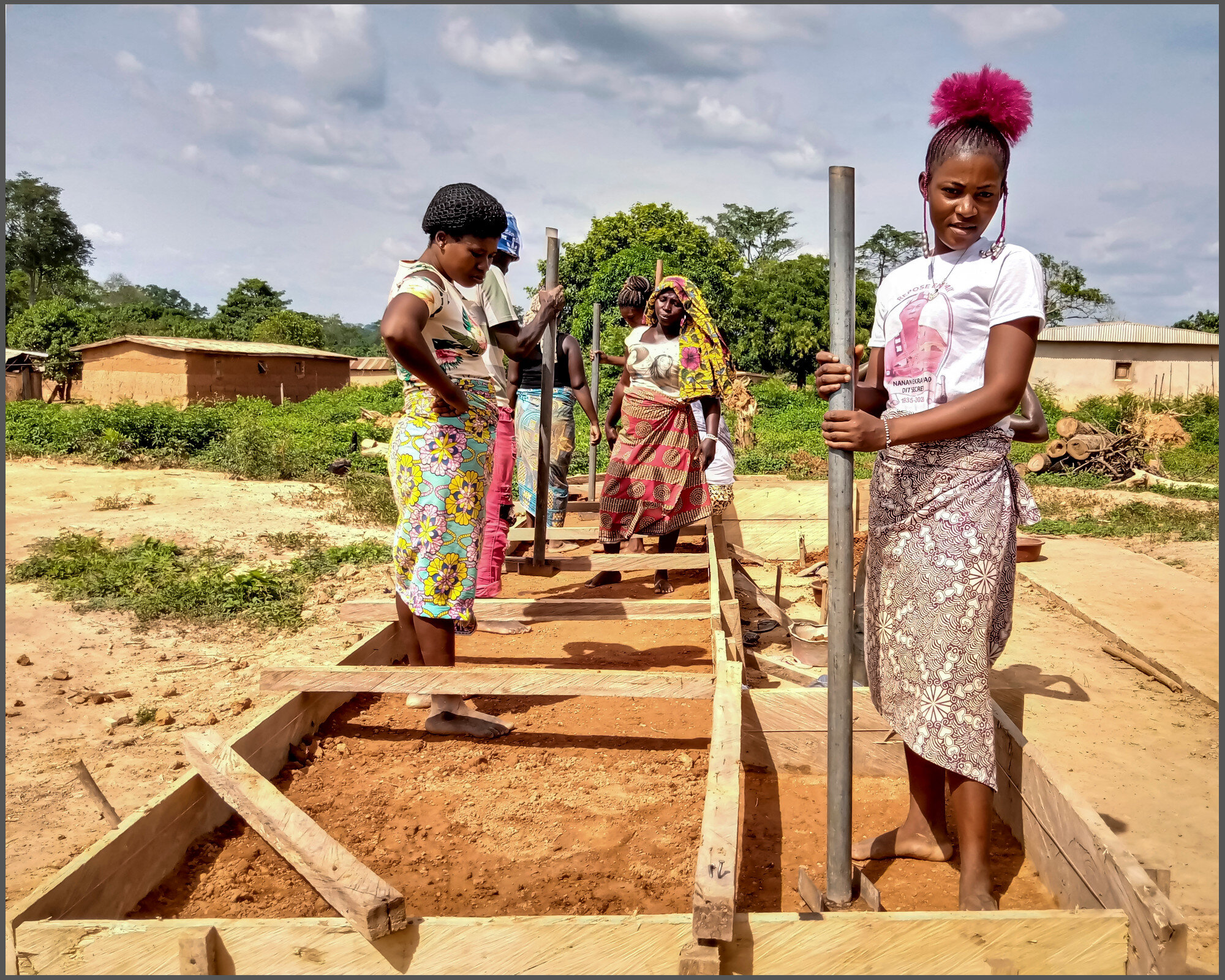News from the partners _ AK0 builds in Africa
La Maison du Gardien
a service building in raw earth and bamboo built by trainees and local craftsmen and -women
When our Italian partner-organisation AK0 - architettura a kilometro zero started its cooperation project on sustainable architecture in Côte d'Ivoire in 2017, one of the goals was to train local craftsmen and inhabitants and enable them to take advantage of locally available resources such as raw earth, natural fibres and centuries of non-codified yet deep and precious knowledge.
The implemented training activities were conceived as learning-by-building experiences. Using the building site itself as a meeting point for persons with different cultural backgrounds proved to have catalysing effects for the production and dissemination of new knowledge. As a positive side effect it allows for stronger social interaction, both within the local community and, as experienced for example during a building workshop with students and teachers from the Italian University Roma Tre in 2019, across the continents.
All this was supposed to be the starting point for the realisation of La Maison du Gardien, a small service building within the educational crop garden Fierté near the town of Prikro in the inner Iffou region. After training activities and the construction of small experimental buildings as an outcome of them, the construction of a first complete building was the next planned step of a longer cooperation program called ABRI (Architecture et Bioconstruction pour l'environnement Rural Ivoirien) aiming at enhancing the technological level of construction methods that are present on place but not always applied in their best possible way.
In spring 2020 everything was ready to open this new educational building site. A fundraising campaign has been successfully concluded, a new agreement with a university was signed to bring a group of Italian students to Africa and the architectural design has been updated based on the lessons learned during the previous experiences on place, when the SarS-Cov2 pandemic brought a forced stop. Even after the travel ban was eased, it didn't appear sensible to force intercontinental meetings along with the risk of bringing infections to a region which is socially vulnerable yet has been spared since then from the phenomenon.
Together with the local partner organisation Eau et Miel Moyé de l'Iffou, AK0 redesigned the whole programme in order to implement it without being on place. The shared work experience during previous missions proved to be a solid base of trust. This made it possible to shape a training-programme where previously trained craftsmen and -women took the role of trainers on the building-site. Weekly online-sessions with the Italian team helped to decide which issues to treat and which operational steps to face on the building site. New knowledge was discussed with the local staff, who then found the right words to pass the notions to the group of trainees, which included other craftsmen, unoccupied persons from the local community and a number of high-school pupils.
trainees at work on the building site in Babrassou
112 trainees have participated in the construction of La Maison du Gardien and two smaller community buildings in the towns of Biankouma and Babrassou. One of the programme's crucial items was the use of rammed earth. Despite a surprising variety of different building techniques with raw earth that could be found in the area, this monolithic way of compressing a humid earth-mix into wooden form-work was not known locally. However the local team got quickly convinced that the fact of requiring only few water, the possibility of adjusting the structural performance by mixing different soils in the right proportion, and the fact that not much more than a lot of labour, which is widely available on place, is needed to build solid and aesthetically appealing walls.
In the Maison du Gardien a long rammed earth wall provides the main façade towards the public street. It forms the backbone that holds simpler masonry cells. For the latter compressed earth blocks (CEB) have been used according to local uses. Here the ambition of improvement has been dedicated to better earth-mixes, including stronger raw-earth-mortars.
The ambition of valorizing locally sourceable resources brought the attention to natural fibres. The local architecture already makes use of different sorts of grasses, straws or palm leaves for thatched roofs and lianas for tied or woven structures. An available but actually under-used resource is bamboo. In the region it is used for fencing or simple shadow-roofs; it's architectural potential seems not fully endeavoured yet.
The roof for the service building offered a good opportunity to test ways of joining and tying culms of this giant grass to build stiff and resistant structural frames. Different solutions of curved and straight trusses have been tested before deciding the final structure.
installation of the bamboo trusses for the roof structure
A second way of using bamboo is in form of stripes. They are used to wave dome-structures that can substitute the false ceilings normally built of plywood or other imported materials.
The building is composed of a small storage room which also hosts a table for accountancy work or similar activities. One room is linked with a patio and an external bathroom. It is home for a caretaker and his family who will preside over the crop garden. Additional washing facilities are accessible from the outer part of the area and made accessible to agricultural workers and trainees.
All the construction steps had been tested and decided during previous workshop experiences held before the outbreak of Covid19. This made it possible to activate the acquired knowledge once forced to work at a distance. The local team demonstrated to have learned its lessons and all the involved partners have learned that personal interaction and mutual trust are among the strongest building materials at all.




